| When we point to objects in the world and say "this one" or "that one", we use demonstrative pronouns. In this lesson, we will learn Japanese demonstrative pronouns これ, それ, あれ and どれ. Together, this type of words are called こそあど words. |
Slide 1 of 11
 |
Japanese has three separate demonstrative pronouns for objects: これ, それ and あれ
depending on how far the objects are in relation to the speaker and the hearer. |
Slide 2 of 11
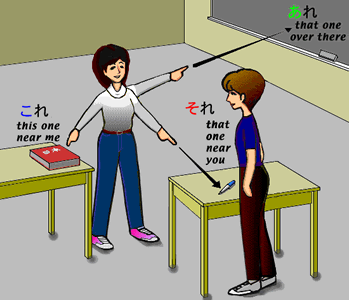 |
これ means "this one," あれ means "that one over there" and それ means "that one near you." That is, これ refers to objects near the speaker, あれ refers to objects away from both the speaker and the hearer, and それ refers to objects near the hearer. Both それ and あれ are referred to as "that" in English. |
Slide 3 of 11
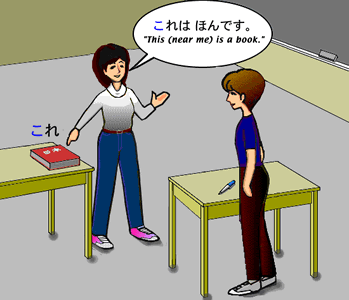 |
For example, to talk about the object close to the speaker, you use これ as in これは ほんです , or "This is a book." |
Slide 4 of 11
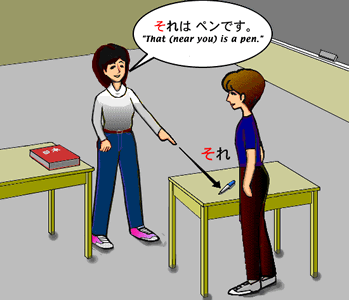 |
To talk about the object close to the hearer, you use それ as in それは ペンです , or "that one near you is a pen." |
Slide 5 of 11
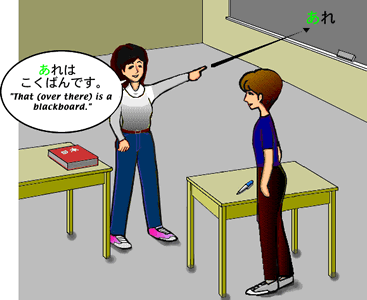 |
Finally, when you are referring to the object that is away from both the speaker and the hearer, you use あれ as in あれは こくばんです , or "that one over there is a blackboard." |
Slide 6 of 11
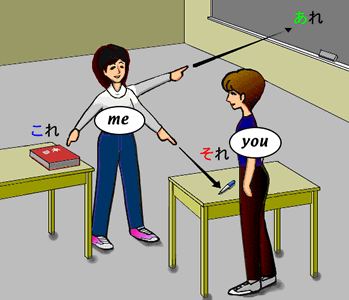 |
What if "you" in the picture becomes the speaker instead of "me?" |
Slide 7 of 11
 |
From "your" new perspective, the pen is now referred to as これ, and the book is それ. The blackboard, however, remains あれ since あれ points to the object that is away from both the hearer and the speaker. |
Slide 8 of 11
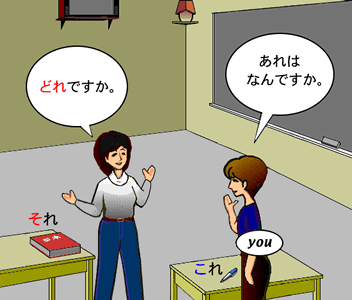 |
When you are not sure which item the speaker is referring to, you can use どれ or, "which" as in the example. A: あれは なんですか。
B: どれ ですか。 |
Slide 9 of 11
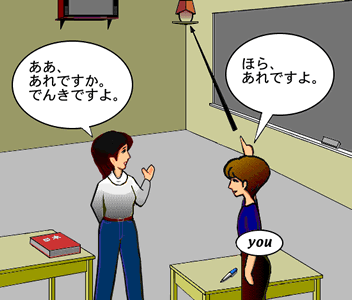 |
A: ほら、あれですよ、あれ。 B: ああ、あれですか。でんきですよ。 |
Slide 10 of 11
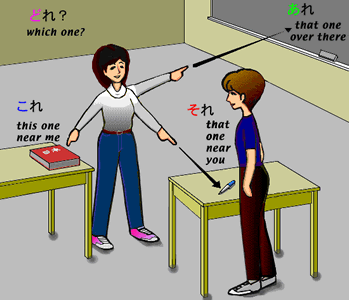 |
The following demonstrative pronouns were presented.
The end of the slide presentation. |
Slide 11 of 11